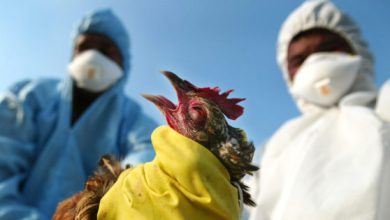NATO Developing Plans for MASS CASUALTIES in WWIII Conflict With Russia

This article was originally published by Ethan Huff at Natural News.
Lieutenant-General Alexander Sollfrank, the head of NATO’s logistics command, confirmed this week that the Western-led security bloc is developing new mass evacuation and rescue plans in preparation for a future war with Russia.
NATO is working, according to Sollfrank, to expand its operational capacity for extracting large numbers of wounded troops from the front lines. The apparent plan is for another world war that results in large numbers of casualties, and NATO recognizes that it will face heavy battlefield losses against Russia.
Russia’s air force has vaunted rockets and missile stockpiles that will make it too risky for medical evacuations via aircraft. This means NATO troops will need to operate “hospital trains” instead to extract large numbers of wounded soldiers off the battlefield.
“The challenge will be to swiftly ensure high-quality care for, in the worst case, a great number of wounded,” Sollfrank said.
The German military, in which Sollfrank is a general, recently announced that it expects Russia will have the capacity to attack a NATO country as soon as 2029. This means there is still time for NATO to build up its defenses against such an attack.
(Related: Check out our earlier report to learn more about how NATO and the West are planning to trigger WWIII.)
NATO expects mass soldier casualties as tensions with Russia escalate
Sollfrank’s job as head of NATO’s Joint Support and Enabling Command (JSEC) is to coordinate the rapid movement of troops and tanks across Europe. He also has the job of performing logistical preparations for the storage of munitions on NATO’s eastern flank.
Ever since Russian President Vladimir Putin invaded Ukraine in early 2022, NATO has been grappling with the possibility of a major land war erupting across Europe. In preparation for such an event, Sollfrank is coordinating plans for future medical evacuations.
A massive network of rail and road evacuations is needed in lieu of being able to fly soldiers out of harm’s way, Sollfrank says.
“Air superiority will have to be achieved in the first place,” he told Reuters. “It will require time to succeed over the entire length and depth of the front line.”
“For planning reasons, all options to take a great number of wounded to medical installations need to be considered, which includes trains but potentially also buses. Differing medical regulations between countries are another hurdle to overcome.”
One possibility is the creation of a “military medical Schengen,” or a special area of free passage through which sensitive medications such as narcotics and strong painkillers could make their way to injured military personnel.
In 2024, NATO launched its largest campaign of military drills since the Cold War, this as tensions between Russia and the West have reached a decades-long high. Any day now, things could erupt into something much larger and more dangerous than today’s generations are used to, and NATO is preparing accordingly.
Known as Steadfast Defender 2024, the suite of NATO exercises took place during the first six months of this year and involved some 90,000 troops from more than 30 allied and partner countries who joined together to test their collective capabilities in terms of land, sea, air and cyber conflict theaters.
“The exercises were spread across the first six months of the year and saw the armies, navies, and air forces of dozens of countries engage in war games on Europe’s southern, northern, and eastern flanks,” reports explain.
“NATO is also said to have drawn up plans for how to deploy American troops to the frontlines of Europe in the event of an all-out conflict with Russia. New ‘land corridors’ are being carved out to quickly funnel soldiers through central Europe without local bureaucratic impediments, allowing NATO forces to pounce in an instant should Putin’s devastating war in Ukraine move further west.”







